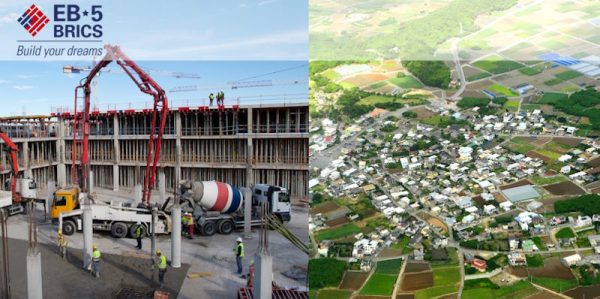
Changes introduced by the EB-5 Reform and Integrity Act of 2022 (RIA)—20% set aside, no backlogs as of 2024, and mandatory priority processing—have made rural EB-5 projects extremely attractive for EB-5 investors.
However, choosing to invest in a rural project just because your I-526E will be processed quickly or that it happens to be the automatic choice for a large number of investors can be a very expensive mistake.
Like every investment decision, the choice of the EB-5 project should be based on your goals, risk profile, and other unique factors. Here are a few scenarios where investing in a High Unemployment Area (HUE-TEA) project may be a smarter and safer choice for some EB-5 investors.
When the Extra Wait Does Not Matter
As per the USCIS, historical median processing times for I-526 processing for FY 2024 (up to February 2024) is around 52 months. As per USCIS, 80% of I-526 petitions are adjudicated in around 54.5 months. However, there is no official date released yet for applicants investing in rural and HUE-TEA projects.
Anecdotal evidence from industry professionals suggests indicate that it takes around 12 months for a rural I-526 petition to be processed, and, surprisingly, around two years for HUE-TEA petitions.
It is interesting to note that the RIA mandates priority processing only for rural projects. HUE-TEA projects don’t qualify, and yet average processing times have come down.
If you are a non-immigrant in the US, then you can work and travel with minimal restrictions in approximately four to six months by concurrently applying for an Employment Authorization Document (EAD) and Advance Parole (AP) along with your I-526E and I-485 petitions.
An additional wait of 12-18 months may be significant for an investor outside the US who also has to wait for Consular Processing before getting the EB-5 visa. However, somebody already in the US can look beyond processing times when comparing rural and HUE-TEA projects.
When Tried-and-Tested is Preferable
The Immigration Act of 1990 defined a Targeted Employment Area (TEA) as a rural area or an area with an unemployment rate of at least 150% compared to the national average.
The option of investing in rural areas is as old as the program itself, but both investors as well as Regional Centers (RCs) and project developers preferred to stick to urban TEAs over rural projects.
The recent rush may have brought in a lot of interest into rural projects but it can be tough for investors to identify developers and RCs with extensive experience in rural EB-5 projects. In contrast, HUE-TEAs have been the mainstay for decades.
If an investor prefers RCs with multiple successful projects completed through tried-and-tested strategies and processes, then he or she may find it easier to make an informed decision by preferring urban TEA projects over rural areas.
When Unconventional Equals High Risk
Real estate and construction projects, which have long dominated the EB-5 landscape, may not always be viable in the context of a rural economy.
Constructing a luxury hotel or high-end homes for the ultra-rich in a rural area may be unconventional ideas that may fall beyond the risk tolerance of conservative EB-5 investors.
Or, RCs may look beyond real estate and explore industrial projects to mitigate job creation risks, but at the cost of higher financial risk for the investor.
Rural projects may involve higher risks but may offer a payoff in the form of faster approvals. An investor who does not find this proposition attractive may find more conventional options in urban TEAs.
When Risk Mitigation is Extremely Important
Rural economies have their unique challenges ranging from overdependence on one or two major industries to infrastructure bottlenecks or even fewer customers due to the low density of the population.
These factors may create unacceptably high risks for the EB-5 investor. While the at-risk requirement of the EB-5 investment cannot be avoided, urban TEA projects may offer better opportunities for investors to mitigate risks to the maximum extent possible.
An operational real estate project with I-956 approval that has created more than 20 jobs per investor and intends to use EB-5 funds to refinance costly debt may be the best option for a risk-averse EB-5 investor to maintain an at-risk investment with minimal financial and immigration risks.
Identifying such a ‘safe’ at-risk investment opportunity in a rural area may be extremely tough simply because of the unique challenges impacting rural projects.
When Return of Investment is a Priority
An investor from China facing the prospect of his children aging out before I-526E approval in an unreserved project may choose to bear a higher risk of loss of investment in return for the advantages of priority processing and zero backlog.
However, a foreign student in the US who can well afford to wait until graduation for permanent residence may prefer a safer and slower project with a higher probability of return of capital.
The inherent risks in rural investments combined with the viability of real estate projects in HUE TEAs mean investors enjoy a higher probability of return of capital by choosing the latter over the former.
The scenarios described above clearly highlight that investors cannot adopt a rigid and formulaic approach when comparing rural and HUE-TEA options. No single factor—priority processing, higher probability of return of capital, or aversion to unconventional projects—can be the sole factor determining the decision.
The safest and smartest route may be to identify a project that matches the investor’s financial profile, risk preference, timeline, and expectations of returns.


